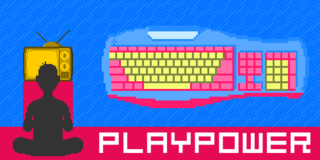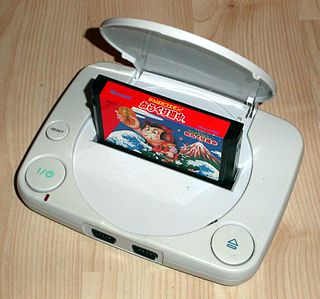 W
WNintendo Entertainment System: NES Classic Edition, known as Nintendo Classic Mini: Nintendo Entertainment System in Europe and Australia and Nintendo Classic Mini: Family Computer in Japan, is a dedicated home video game console by Nintendo, which emulates the Nintendo Entertainment System (NES). It launched on November 10, 2016 in Australia and Japan, and November 11, 2016 in North America and Europe. Aesthetically, the console is a miniature replica of the NES, and it includes a static library of 30 built-in games from the licensed NES library, supporting save states for all of them.
 W
WDendy is a Taiwanese hardware clone of the Family Computer, produced for the Russian market. It was released in 1992 by the Steepler company. The Dendy was easily the most popular video game console of its time in the former USSR region and enjoyed a degree of fame roughly equivalent to that experienced by the NES/Famicom in North America, Japan and Western Europe. In 1992, Dendy was selling in the Russian Federation for 39,000 rubles ; by 1994, over one million Dendy units were sold in Russia, and the price was roughly $35.
 W
WThe Famicom Titler (ファミコンタイトラー), also known as the Famicom Editor , is a Nintendo-licensed Famicom-compatible home video game console produced by Sharp Corporation in 1989. The console was released exclusively in Japan at a retail price of 43,000 yen. The system was the only consumer-level Famicom to internally generate RGB video, the only Famicom system with S-Video output, and it has been noted for its crisp image clarity. The system also functioned as a subtitle-generator and it could be used in combination with a RF-video camera to create gameplay videos and demos.
 W
WThe FC Twin is a Famiclone that can play Nintendo Entertainment System and Super NES games. Manufactured by Qishenglong (奇胜隆), the system has been well-received due to the increasing scarcity of the original hardware. It is distributed by Yobo Gameware in the U.S. and Gametech in Japan.
 W
WThe Mega Kid MK-1000 is a Nintendo Entertainment System hardware clone with a built-in Famicom BASIC compatible keyboard, marketed as an "educational computer".
 W
WMicro Genius is a brand name used for Famicom clone consoles marketed in several countries around the world, particularly in areas where Nintendo consoles were not readily available, including the Middle East, Southeast Asia, South America, Eastern Europe, South Africa and East Asian countries excluding Japan and South Korea. The name was initially and most famously used by TXC Corporation for its range of Taiwanese-made Famicom clones, software and accessories, but later passed to other companies and remains in use today on rebranded Chinese Famicom clones and LCD games.
 W
WPLAYPOWER is a 2008-started non-profit organization designed to create free educational computer software for low income families in India and other developing countries. After 2012 the project was reformed as Playpower Labs, LLC, which focuses now on educational games for mobile platforms.
 W
WPolyStation is the name given to many Nintendo Entertainment System hardware clones that closely resembles a Sony PlayStation, particularly the PSone variant. The cartridge slot of these systems is located under the lid which, on an original PlayStation, covers the disc drive.
 W
WThe Power Player Super Joy III is a line of handheld Nintendo Entertainment System/Famicom video game console clones. They are notable for legal issues based on the violation of intellectual property rights held by Nintendo and its various game licensees. Manufactured by NrTrade, the Power Player line has been sold in North America, Brazil, Europe, Asia, and Australia.
 W
WThe Retro Duo is a handheld game console developed by Retro-Bit and distributed by Innex, Inc. It plays game cartridges for the Nintendo Entertainment System and Super Nintendo Entertainment System. It plays North American, European and Japanese games and has the highest compatibility of any other clone system. S-video is compatible when playing SNES games. The console is not licensed by Nintendo and it’s not fully compatible with every game released for the two game systems; however, the majority of games function properly. While it has only been released in Canada and the United States, it can still be used in Europe and Japan with a power plug adapter. The console is compatible with official and third party SNES controllers.
 W
WThe Sharp Nintendo Television is a television produced by Sharp Corporation with a built-in licensed Nintendo Entertainment System. Originally released in Japan in 1983, the unit was released in the US in 1989. The C1 is notable for having provided the high-quality screenshots displayed in video game magazines of the period, due to its having slightly better picture quality than a Famicom or NES paired with a separate television. The concept was followed up in Japan by the Super Famicom-based SF1 in 1990.
 W
WThe Super 8, also sold under the title Tri-star or Tristar, is an unlicensed video game peripheral released in 1995 for the Super Nintendo Entertainment System designed to allow the system to run games developed for the Nintendo Entertainment System. The Super 8 utilized an NES-on-a-chip integrated circuit to duplicate the functionality of the original NES hardware, and connected to the SNES's own cartridge slot.
 W
WThe Twin Famicom is a home video game console that was produced by Sharp Corporation in 1986 and was only released in Japan. It is a licensed Nintendo product that combines the Family Computer (Famicom) and the Family Computer Disk System (FDS) into a single piece of hardware. Sharp removed most Nintendo branding from the system, even going as far as to remove the "Nintendo" branding from the Famicom Disk System startup, replacing it with the same "FAMICOM" logo used on the system itself.